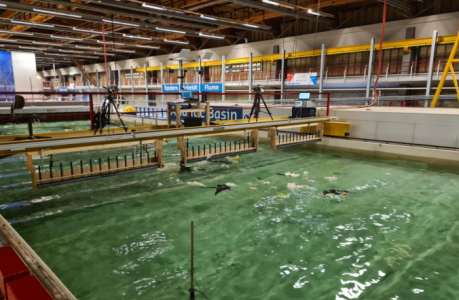Satellite-based microwave remote sensing for marine litter mapping (MARES)

Plastic marine litter is becoming a major environmental concern. Microwaves (MW) have potential for remote detection of floating macroplastics operating from Satellites or Airborne platforms, but very scarce and limited studies exist in the literature using MW. We present the first results of a systematic study on MW scattering of floating low-mass macroplastics at 2-20 GHz frequency band using radar techniques. Data was first collected in small-scale measurement campaigns carried out in an indoor facility capable of producing deep sea-like wave patterns, with different floating single-use plastic items. The study revealed that, for these targets, one important scattering contribution arises from the indentation they produce on the water. For the tested conditions, targets, and metrics, it was possible to detect several types of floating plastic targets down to 10 g/m2 concentration. Detection tended to significantly improve at the X-band, although the detection threshold depends on the combination of the mentioned conditions. Tests were extended also to a small- and medium-scale outdoor scenarios with natural wind and capillary waves. Detection of macroplastics was successful in these tested scenarios. Also, passive radiometric tests were conducted at the W-band and showed very promising detection for floating plastics in small-scale outdoor environments. Finally, Machine Learning techniques were successfully evaluated as a complementary technique to improve the detection process, or the detection criteria.
